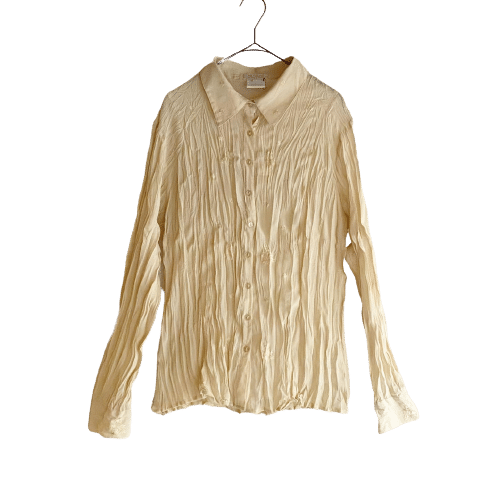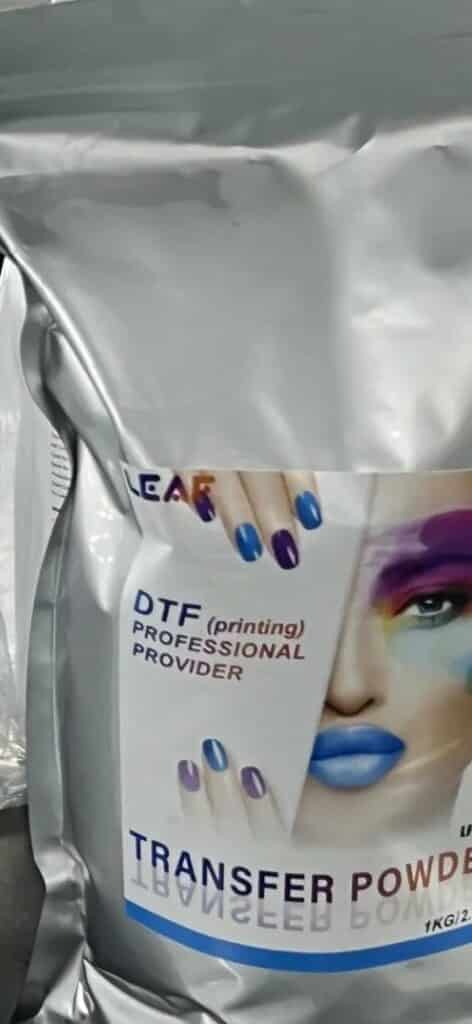Are the DTF-printed t-shirts you own becoming less appealing sooner than you thought? Are you annoyed by wrinkles that show up after only one or a few washes? It’s not just you. The battle against DTF t-shirt wrinkles is genuine, and it’s time to confront this critical issue head-on.
We go in-depth on the reasons, effects, and – most importantly – solutions in this extensive guide to make sure your DTF-printed shirts maintain their smooth, colorful appearance over several washings. Welcome to gorgeous, long-lasting prints and bid adieu to the wrinkle problem!

Understanding the DTF T-Shirt Wrinkles
Think of the disappointment you would have when you pulled your clean, DTF-printed t-shirt out of the dryer to see ugly creases ruining your perfectly good print. A sense of frustration descends as you ponder whether the poor quality of the transfer films you used was the cause of this or if you made a mistake during the pressing process.
In this part, we explore the sources of these frustrating creases and highlight the key elements. Understanding the details can help you permanently remove these wrinkles.
4 Causes of DTF T-Shirt Wrinkles
1. Subpar Transfer Films
A major contributing factor to DTF t-shirt creases are inferior transfer films. Poor quality transfer films are unable to adhere to the cloth as well or have insufficient resilience to resist washing. Because of this, your prints eventually develop ugly wrinkles and premature cracking and peeling.
2. Inadequate Curing or Pressing Techniques
How you apply heat and pressure during the curing or pressing process is critical. If the settings or methods are wrong, the transfer film and the cloth will not stick together evenly. This irregularity results in air pockets or inadequate bonding, which might lead to creases when you wash the t-shirt.

3. Inadequate Post-Printing Treatment
Although it’s often disregarded, post-printing treatment is crucial to preserving the durability of DTF prints. Lack of curing or finishing cause prints to wrinkle during laundry. Sufficient post-printing procedures, including heat curing or sealing, could mitigate this problem.
4. Type and Composition of the Fabric
The kind and composition of the material utilized to make your t-shirts might affect how easily they wrinkle. Certain types of materials are more likely than others to wrinkle, particularly after a few washes. Understanding the fabric’s properties and adapting printing and maintenance processes helps eliminate wrinkles or vertical stretches.
Solving Wrinkles in DTF Printed Garments The Right Way
The annoying problem of t-shirt creases after washings was something I experienced as a DTF printing lover, but I was motivated to find solutions. Here’s my first-hand summary of the approaches that worked to solve this serious issue:
Verify Ink Density
I was interested in a forum member’s recommendation on ink density. I understood that wrinkles could possibly come from using excessive ink on the transfer film. So, I carefully tweaked my ink density settings until I achieved the ideal equilibrium. This step alone made a noticeable difference in print quality and reduced wrinkling significantly.

Moisture Problems
A fellow DTF fan also gave us a valuable hint by pointing out the importance of moisture. I found that moisture from the air might be absorbed by cotton and TPU adhesives, which would change the adherence during pressing.
I started using desiccant – those useful silica packets – in sealed containers and keeping my transfers in a dry environment as a countermeasure. To further eliminate moisture from the cloth, I found that pre-pressing shirts before applying transfers was an essential component of my routine.
Storage
The right kind of storage was essential. I started using sealed containers and silica packets as my go-to solutions for keeping transfers dry. This little adjustment made a big difference in my prints’ quality.
Balancing Ink Density
Adjusting ink density settings was vital. A significant factor contributing to wrinkles was excessive ink thickness, which was avoided by striking the correct balance. Changing up the ink density settings was an awakening.
Testing on Different Fabrics
I made the decision to attempt applying transfers to a variety of fabrics, including pre-washed polyester shirts, in order to rule out fabric as a possible reason. I was able to verify via this experiment that the problem wasn’t exclusive to cotton and also pointed me in the direction of more adaptable remedies.
Think about DTF Powder
A forum participant brought up the topic in a recent discussion, but they didn’t go into detail. It was up to me to look into this further. It seems that DTF powder helps improve ink adherence and drying, reducing wrinkles. Choosing a genuine DTF powder was a useful addition to my workflow, and the outcomes looked good.

Conveyor Drier
I made the decision to purchase a conveyor drier. It helped to avoid problems like wrinkling and enhanced ink drying when all kinds of transfers were run through it before to use. It was a useful addition to my setup.
After going through these experiences and putting these ideas into practice, I went from being a dissatisfied DTF printer to a self-assured DTF expert who knew how to take on the problem of t-shirt wrinkles head-on. With the correct methods and a little trial and error, you too can get long-lasting, wrinkle-free DTF printed t-shirts.
Conclusion
Wrinkles don’t have to be an unwelcome visitor on your t-shirts. We’ve solved the puzzle of this annoying problem by using our knowledge and useful solutions.
With proper ink density, moisture management, storage, and equipment, wrinkled prints may be eliminated. When done well, DTF printing produces vivid, long-lasting visuals that hold up against washing and aging. Accept these tips, then let your DTF masterpieces wow everyone with their flawless, wrinkle-free sheen.
FAQs
Indeed, the choice of cloth matters. Certain materials are more likely than others to wrinkle, particularly after washing. Try trying with other materials to see if the problem continues.
Varying the ink density for every design is typically a good idea, though there isn’t a universal solution. Achieving the ideal balance can vary based on the fabric type and design complexity.
Certainly, adding a conveyor drier to your setup could prove beneficial. Through uniform curing and adhesion, it promotes equal drying of the ink and helps in preventing problems such as wrinkling.
Using DTF powder can increase the drying and adherence of ink. Although it’s not necessary, it can enhance the overall quality of your prints and assist with problems like wrinkling.
It is true that post-printing procedures like heat curing or sealing can reduce wrinkles. The lifetime of your prints depends on how well you set them after application.
Use desiccant in sealed containers and store transfers in a dry area if you fear moisture problems. In addition, pre-pressing shirts before applying transfers can help remove superfluous moisture from the fabric, thereby potentially reducing wrinkles.

Ashley Wang is a skilled sales manager with knowledge in DTF printing. She presently works for ShenLan Digital, a reputable DTF printer maker. Ashley is the best person to offer advice on selecting the most suitable DTF printer because she has tested a lot of them. She launched DTFPrinterSchool to educate individuals and organizations about DTF printing technology, providing her expertise and observations on the most recent advancements in the sector. Ashley is an invaluable resource for businesses and individuals wishing to invest in DTF printing technology because of her expertise and experience in the industry.
